
Curd Gustav Andreas Gottlieb Franz Jürgens was a German-Austrian stage and film actor. He was usually billed in English-speaking films as Curt Jurgens. He was well known for playing Ernst Udet in Des Teufels General. His English-language roles include James Bond villain Karl Stromberg in The Spy Who Loved Me (1977), Éric Carradine in And God Created Woman (1956), and Professor Immanuel Rath in The Blue Angel (1959).
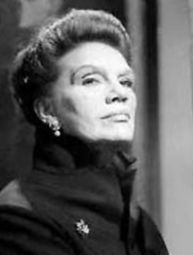
Elisabeth Ida Marie Flickenschildt was a German actress, producer and author. She appeared in dozens of German language films and television productions between 1935 and 1976.
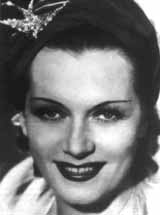
Olga Konstantinovna Chekhova, known in Germany as Olga Tschechowa, was a Russian-German actress. Her film roles include the female lead in Alfred Hitchcock's Mary (1931).

Sybille Maria Christina Schmitz was a German actress.

Éva Márta Szőke Ivanovics, known professionally as Eva Bartok, was a Hungarian-British actress. She began acting in films in 1950, and her last credited appearance was in 1966. She acted in more than 40 American, British, German, Hungarian, French, and Israeli films. She is best known for appearances in Blood and Black Lace, The Crimson Pirate, Operation Amsterdam, and Ten Thousand Bedrooms.
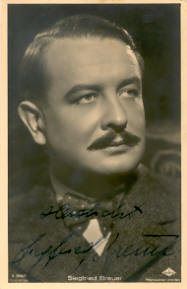
Siegfried Breuer was an Austrian stage and film actor and occasional film director and screenwriter.
![<i>The Devils General</i> 1955 [[West Germany]] film](https://upload.wikimedia.org/wikipedia/en/3/32/The_Devil%27s_General.jpg)
The Devil's General is a 1955 black and white West German film based on the play of the same title by Carl Zuckmayer. The film features Curd Jürgens as General Harras, Marianne Koch, Viktor de Kowa, Karl John, Eva Ingeborg Scholz, and Harry Meyen. It was shot at the Wandsbek Studios in Hamburg. The film's sets were designed by the art directors Albrecht Becker and Herbert Kirchhoff.

Is Your Honeymoon Really Necessary? is a 1953 British comedy film directed by Maurice Elvey and starring Bonar Colleano, Diana Dors, David Tomlinson and Diana Decker. It was based on Vivian Tidmarsh's 1944 West End hit play by the same name.

Hubert "Hubsi" von Meyerinck was a German film actor. He appeared in more than 280 films between 1921 and 1970.

Trude Hesterberg was a German film actress. She appeared in 89 films between 1917 and 1964.

Else von Möllendorff was a German film actress who appeared in a mixture of lead and supporting roles during the Nazi and post-war eras.
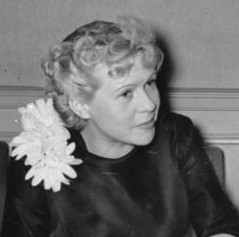
Fita Benkhoff was a German actress.

The Day Before the Wedding is a 1952 West German comedy film directed by Rolf Thiele and starring Paul Dahlke, Elisabeth Müller, and Joachim Brennecke. It was shot at the Göttingen Studios. The film's sets were designed by the art director Walter Haag.

Tell the Truth is a 1946 German comedy film directed by Helmut Weiss and starring Gustav Fröhlich, Mady Rahl, and Ingeborg von Kusserow. The film had a troubled production, and was originally filming in the final days of the Nazi era with Heinz Rühmann and his wife Hertha Feiler in the lead roles. Production was halted when Soviet forces took control of the Tempelhof Studios during the Battle of Berlin. The film was then remade in the British sector of Berlin with different leads but using substantial amounts of footage already shot during the previous production.

Prisoners of Love is a 1954 West German drama film directed by Rudolf Jugert and starring Curd Jürgens, Annemarie Düringer and Bernhard Wicki. It revolves around the story of a married couple separated by the Second World War. It was shot at the Bavaria Studios in Munich. The film's sets were designed by the art director Erich Kettelhut and Johannes Ott.
Is Your Honeymoon Really Necessary? is a 1944 comedy play by the British writer Vivian Tidmarsh. The title is a reference to the wartime slogan Is Your Journey Really Necessary?.
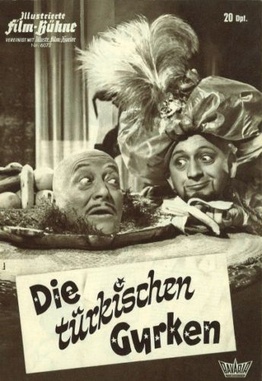
The Turkish Cucumbers is a 1962 West German comedy film directed by Rolf Olsen and starring Gunther Philipp, Oskar Sima and Susi Nicoletti.

Blind Justice or Excluded to the Public is a 1961 West German crime drama film directed by Harald Philipp and starring Peter van Eyck, Marianne Koch and Eva Bartok.

Wedding Night is a 1947 Swedish comedy film directed by Bodil Ipsen and starring Max Hansen, Sickan Carlsson and Inga Landgré. It was shot at the Sundbyberg Studios in Stockholm. The film's sets were designed by the art director Max Linder. It is an adaptation of the 1944 British play Is Your Honeymoon Really Necessary?.







![<i>The Devils General</i> 1955 [[West Germany]] film](https://upload.wikimedia.org/wikipedia/en/3/32/The_Devil%27s_General.jpg)










